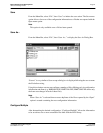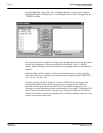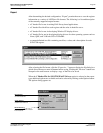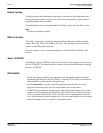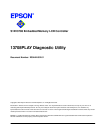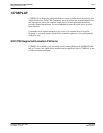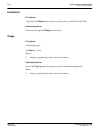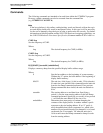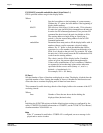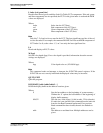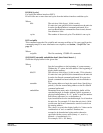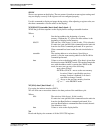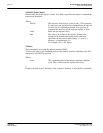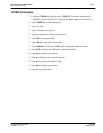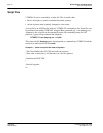
Epson Research and Development Page 5
Vancouver Design Center
13708PLAY Diagnostic Utility S1D13708
Issue Date: 01/11/16 X39A-B-002-01
Commands
The following commands are intended to be used from within the 13708PLAY program.
However, simple commands can also be executed from the command line
(e.g. 13708PLAY F 0 13FFF 0).
Note
If the host platform is big endian, reading/writing words and dwords to/from the regis-
ters and display buffer may result in unexpected values. In this case it will be necessary
for the user to manually swap the bytes in order to perform the IO correctly. For further
information on little/big endian and the S1D13708 byte/word swapping capabilities, see
the S1D13708 Hardware Functional Specification, document number X39A-A-001-xx.
CLKI freq
Sets the frequency of CLKI.
Where:
freq The desired frequency for CLKI (in MHz).
CLKI2 freq
Sets the frequency of CLKI2.
Where:
freq The desired frequency for CLKI2 (in MHz).
D[S][8|16|32] [startaddr [endaddr|len]]
Displays a memory dump from the specified display buffer address range.
Where:
S Sets the base address to the beginning of system memory.
Without the “S” option, the base address is the beginning of
display buffer memory.
8|16|32 The unit size: 8-bit (bytes), 16-bit (words), 32-bit (dwords).
If a unit size is not specified, this command uses the unit size
from the last Dump command performed. If no previous
Dump command has been issued, the unit size defaults to
8-bit.
startaddr The starting address to read data from. Specifying a
period (.) uses the same starting address as the last Dump
command performed. Specifying a startaddr of two periods
(..) will back the start address by the size of len.
endaddr|len Determines how many units to continue dumping the
contents of the display buffer. A number without a prefix
represents a physical ending address. If an “L” prefix is
used, the number that follows represents len, which is the
number of bytes/words/dwords to be dumped. Len is based
on the unit size. For example, 'L8' when the unit size is
16-bit would cause the Dump command to dump 8 words
from the starting address.



